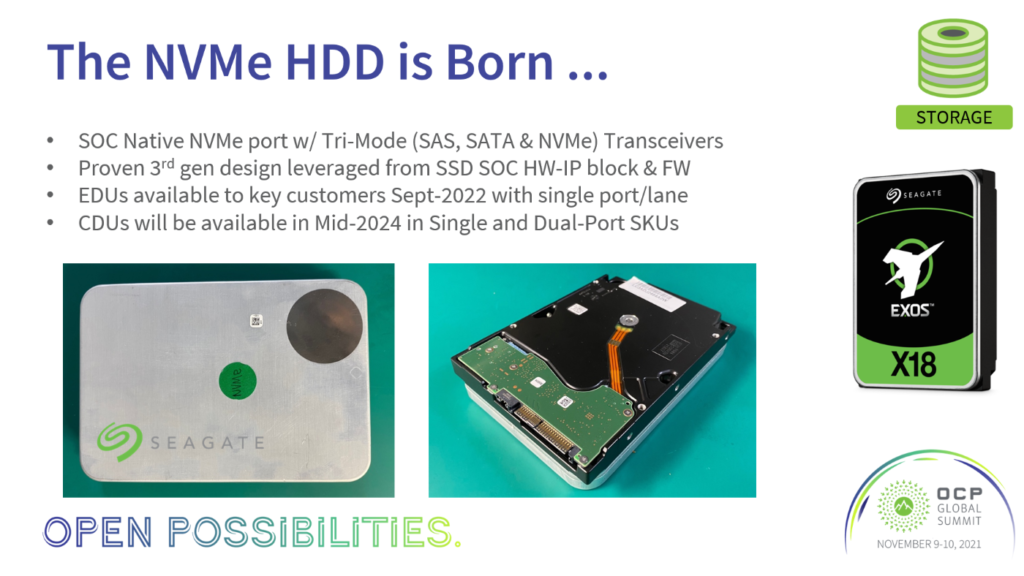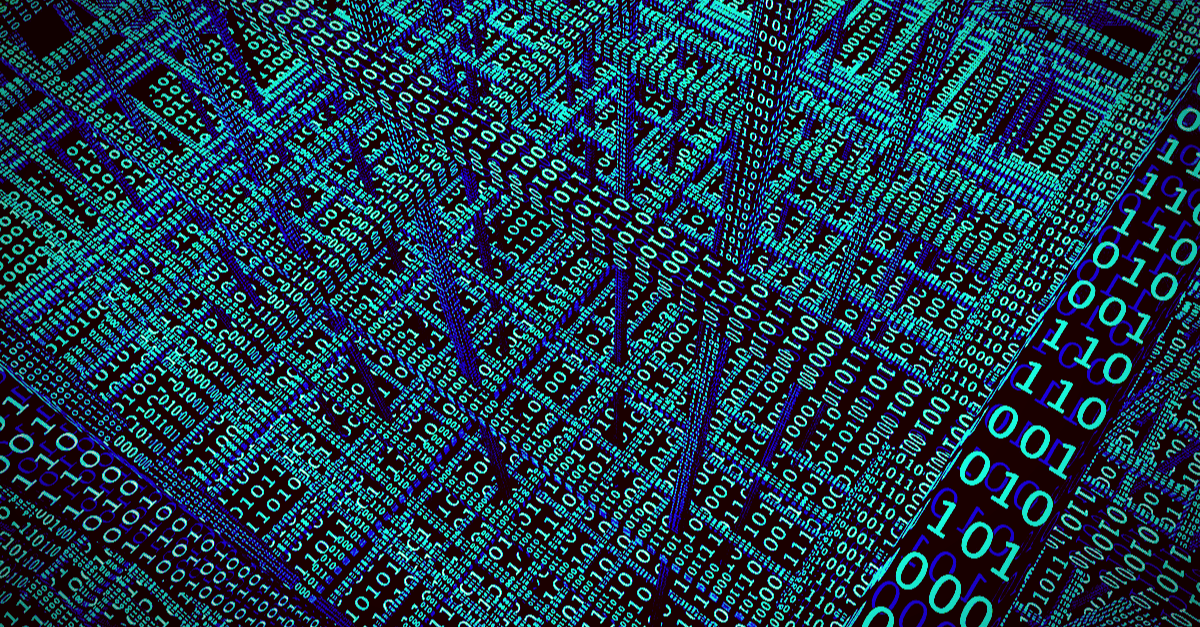For the data storage industry, 2021 was a year of extremes. COVID inflamed political divisions, challenged economies, and snarled supply chains, all while hastening the digitization of our world. Geopolitical tensions ran amok as China and the U.S. battled for technological preeminence; unprecedented weather events menaced regions; and the reality of work-from-home led many to re-evaluate their lives.
Then we had our Chia moment, the proof-of-storage cryptocurrency, that saw hard drives fly off the shelf. (At one point trading at more than $1,600 USD, Chia is now down to about $100 per coin.)
It’s been, by any measure, a busy 2021. The world has a markedly different look and feel to the pre-COVID universe we lived in. Here I review some of the top trends in the data storage industry in the past 12 months and look ahead to the coming year, and beyond.
Data Storage Industry Disruption
It’s increasingly difficult to write about the data storage industry without acknowledging the extent of the geopolitical forces at play. In many ways, these forces—the uncertainty of the supply-demand equation, the impact of COVID-driven lockdowns, the distortion of supply chains—are as important as the technology itself.
Disruption is everywhere across the supply chain, and drive manufacturing is no exception. At one time or another over the past year, the coronavirus shut down manufacturing sites and component suppliers for each of the three hard drive manufacturers. SSD manufacturers similarly struggled with the IC shortage, which impacted SSD controller availability.
The component shortages have shone an unflattering spotlight on the supply chain, exposing its fragility. At the same time, China has made no bones about its desire to emerge as the global technology powerhouse. Such factors have prompted a sharp increase in U.S. government investment in domestic fab manufacturing, though Congress still needs to seal the deal.
Meanwhile, storage demand driven by technology consumption remains unabated.
Logistics Costs Up in the Air
The logistics mess is hitting everyone hard. The cost of international shipping has risen dramatically, with containers costing up to 5X more to ship and air freight up to 3X. Moving product within the United States is not immune, with tractor trailer loads costing up to 4X more than what was charged pre-COVID.
It isn’t just about cost though; lead times are stretched, with ocean backlogs for containers running 4-6 weeks behind and air freight a week longer for pallet shipments. The delays worsen existing bottlenecks in the supply chain and damage company finances in the process.
How long will it remain like this? Given we are in peak season, we do not expect to see airfreight subside until after the Chinese New Year, in early February. The fly in the ointment here remains a lack of shipping containers. We do not think this will correct itself until April, due to protracted bottlenecks at the ports. We also expect this to slow any correction in airfreight costs, as companies turn to air to offset backlogs at the ports.
The emergence of the virulent Omicron strain presents a wild card. While China has been less than transparent with its COVID numbers, we’re hearing word on the street of a potential clampdown as Omicron makes its presence known. If true, this will have downstream ramifications.
Storage for the Metaverse
A year ago we were talking about the impact that artificial intelligence, machine learning, and self-driving automobiles would have on the technology market. In 2021, a new factor emerged: the metaverse, with some pretty big backers. The newly-fashioned Meta (the company formerly known as Facebook) immediately raised the ante, announcing its commitment to spending $10 billion in 2021 alone, pushing the metaverse into reality.
There’s little doubt that metaverse and VR-enabled applications will drive demand for storage. IDC was already reporting that SSD demand is expected to grow 33% annually over the next five years, with hard drive growth pegged at 18.5%.
Whatever your views on virtual reality, the direction of travel is clear. The future will be even more virtual not less; and that is good news for the data storage industry.
Enterprise Hard Drives: The Old Kid on the Block
The outlook for enterprise hard drives remains rosy, but with caveats. Performance and cost are on a collision course, with SSD further closing the price gap with HDD.
New processor and GPU technology offer increased core counts and faster processing speeds. The rollout of innovations in DDR 5 and NVMe software-hardware promise much. With every passing month, David Floyer’s prediction that SSD will supplant HDD by 2026 seems less far-fetched.
However, before declaring victory for SSD, let’s acknowledge the progress the hard drive manufacturers have been making. At November’s Open Compute show, Seagate demonstrated a JBOD housing 12 NVMe interfaced HDD, based on the recently released NVMe v2.0 spec. By abandoning the serial interface for the parallel interface of NVMe, Seagate showed how SSD and HDD can live side by side in an NVMe world.

Other advantages to NVMe-based HDD include:
- simplified builds under one interface
- lower cost of ownership due to low energy consumption
- reduced componentry
- increased scalability, bringing HDD closer to composability
Add in the improved speed of dual actuator arms, and one is sent back to recalculate the cost performance benefits between HDD and SSD. (While Seagate’s fastest HDD offering, the MACH.2, maxes out at 524 MB/second, its dual actuator arms effectively doubles output to match SATA SSD transfer rates.)
Finally, while SSD pricing has closed the gap with HDD, solid state is still selling at a 5x premium.
Data Storage Industry in Race for Areal Density
Seagate: STX continues to push the envelope on areal density amid plans to release its second generation of HAMR-based drives at a much more appealing 30TB capacity. Expect to see a HAMR-based drive in the 30-40TB range in 2023. The slow ramp is attributed to the requirements for two heads and the use of new media. Data centers will be the first to see engineering samples, earmarked to ship in September of 2022.
WDC: Western Digital rolled out its 20TB hard drive featuring the familiar nine-platter 7200RPM helium-filled platform. This drive utilizes energy-assisted perpendicular magnetic recording technology (ePMR). It features triple stage actuator arms (TSA) and OptiNAND, which employs an embedded flash drive to more effectively address metadata, boost performance and reliability, while ultimately carrying the ePMR based drive into 28TB capacities. This approach represents a more attractive option than the shingled magnetic recording (SMR) solution with its slow read response rates. (For its part, Seagate has also released 20TB PMR-based drives, with enhanced cache in both SATA (Iron Wolf) and SAS (Exos X20) interfaces.)
| OptiNAND is a significant improvement over the poorly received hybrid drives of the past. It’s already gaining the interest of cloud providers for its cold storage and archive tiers. Cost/performance is optimized by utilizing SLC for write-heavy operations, and TLC for read-heavy operations, in the same device. |
Toshiba: Despite not being on the front end of hard drive technology, Toshiba continues to benefit from growing data center demand. It posted its fifth consecutive quarter of year-on-year growth in nearline exabytes shipped for the quarter ending in September. The firm pushed out 2.83 million nearline HDDs for the quarter, up nearly 68% YOY. Meanwhile, exabytes shipped climbed to 33.33 EB, up 100% from the previous year—outpacing the industry average. Toshiba’s crème de la crème is its MG09 series 18TB HDD, featuring flux control microwave-assisted magnetic recording (FC-MAMR).
The Solid State of the Data Storage Industry
The rise of NVMe is set to further boost SSD’s fortunes. IDC reports that worldwide SSD revenue will grow at a 2020–25 CAGR of 9.2%, with global sales projected to reach $51 billion by 2025.
Innovation continues apace. When paired with NVMe-oF, NVMe users realize enhanced bandwidth and network speed. The ability to use NVMe SSD in a virtualized environment is also attractive.
Meanwhile, new products introduced at the November Open Compute show demonstrate the potential of NVMe SSD and NVMe-oF from a hardware and software standpoint.
| Marvell | Announced its PCIe 5 NVMe Controller, effectively doubling the performance of PCIe 4. Sequential read throughput hits 14 GB/s and random read performance comes in around 2M IOPS. |
| Inspur | Introduced its Poseidon V2 NVMe reference storage systems based on PCIe Gen 5 in collaboration with Samsung. |
| Kioxia | Revealed its EM6 NVMe-oF EBOF (Ethernet Bunch of Flash), based on RoCE. |
| Seagate | Demonstrated its NVMe-based hard drive. |
The common thread to each of these product announcements is NVMe. It’s not simply NVMe driving performance, though. Processor core counts are increasing, and the uptake of DDR5 Memory will fuel the need for faster low latency storage that can meet the demands of evolving hardware.
Watch this Space
Keep an eye on a company called Floadia Corp., which claims to have solved the endurance issue by increasing the number of bits per cell with ten-year data retention. That would play well into VAST Data’s roadmap, which utilizes QLC-based SSD in its all-flash array.
For its part, VAST just announced the doubling of its enclosure capacity to 1,350 TB, which is over a petabyte per rack and which may prove disruptive to existing HDD storage array and all-flash array vendors. Storage density at this level would reduce power, cooling, and space requirements in the data center.
Consumer Storage
On the consumer side of things, announcements are subdued compared to the enterprise and data center space. NAND manufacturers are gearing to ramp up QLC output, which should translate to lower prices. Expect to see Gen 4 PCIe storage based devices hitting the second half of 2022. We have already seen several introductions of NVMe based consumer drives.
With consumers storing their data in the cloud, there remains limited need to store data locally. This continues to allow consumers to trade size (HDD) for speed (SSD). Those that do need to store data are opting for external drives, which are often HDD based at half the cost of an SSD-based equivalent.
Data Storage Industry Dilemma
It goes without saying that a lot has happened this past year. As always, with the accelerated transition of the digital revolution, there will be both intended and unintended consequences.
I have discussed in the past the responsibility that we, in the technology sector, have as we push new ways of communicating, entertaining, and conducting day-to-day business.
Of course, we have seen the good that technology has delivered, including rapid solutions to medical and environmental challenges. We have experienced levels of everyday convenience that were unimaginable twenty years ago.
But with the good comes the bad. We have witnessed changes that far outpace the ability of the current social and economic superstructures to effectively manage these disruptive technologies. In recent years, we have seen a widening income gap and disrupted labor markets as human labor becomes automated.
With that, I look to the prospect of the metaverse, and what it may entail, with trepidation.
*
Stephen Buckler is Horizon Technology’s chief operating officer. Connect with Stephen on LinkedIn.
For expert support with the procurement and replacement of your data center hardware, get in touch with Horizon Technology.











